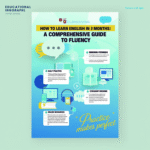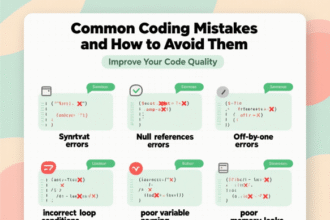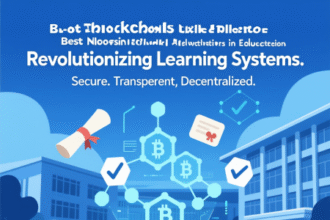In 2025, Learning Management Systems (LMS) have become indispensable tools for organizations, educational institutions, and individual educators aiming to deliver effective, scalable, and engaging training programs. As the demand for digital learning solutions continues to surge, the global LMS market is projected to reach $28.1 billion by 2025, with a compound annual growth rate (CAGR) of 19.2% through 2030. This growth underscores the critical role of Learning Management Systems in fostering continuous learning, upskilling workforces, and enhancing educational outcomes. We present an exhaustive guide to the best Learning Management Systems in 2025, diving deep into their features, benefits, use cases, and how they cater to diverse organizational needs. Our goal is to equip decision-makers with the insights needed to select the ideal LMS for their unique requirements, whether for corporate training, academic institutions, or e-learning businesses.
- What is a Learning Management System (LMS)?
- Why Invest in a Learning Management System in 2025?
- Top 10 Learning Management Systems for 2025
- 1. Continu: The Best Enterprise LMS for 2025
- 2. TalentLMS: Best for Small to Medium Businesses
- 3. 360Learning: Best for Collaborative Learning
- 4. Docebo: Best for Enterprise-Level Training
- 5. Moodle: Best Open-Source LMS
- 6. Absorb LMS: Best for Compliance Training
- 7. iSpring Learn: Best for Rapid Course Development
- 8. Blackboard Learn: Best for Academic Institutions
- 9. LearnWorlds: Best for Course Creators
- 10. SkyPrep: Best for User-Friendly Training
- How to Choose the Best Learning Management System in 2025
- 1. Define Your Training Objectives
- 2. Evaluate Key Features
- 3. Consider Scalability and Budget
- 4. Test Usability
- 5. Review User Feedback
- Emerging Trends in Learning Management Systems for 2025
- 1. AI-Powered Personalization
- 2. Mobile-First Design
- 3. Gamification and Engagement
- 4. Integration with Business Tools
- 5. Microlearning and On-Demand Content
- 6. AR and VR Integration
- Benefits of Implementing a Learning Management System
- Challenges of Using a Learning Management System
- Recommendations for Selecting the Best LMS in 2025
- 15 FAQs About Learning Management Systems in 2025
What is a Learning Management System (LMS)?
A Learning Management System is a software platform designed to create, manage, deliver, and track educational or training content. These systems serve as centralized hubs for e-learning, enabling administrators to streamline course creation, monitor learner progress, and generate actionable analytics. In 2025, modern LMS platforms leverage advanced technologies like artificial intelligence (AI), cloud computing, and gamification to enhance user experiences and drive engagement. From onboarding employees to delivering academic courses, LMS platforms cater to diverse audiences, including businesses, schools, universities, and independent educators.
Key Features of a Modern LMS
To qualify as one of the best Learning Management Systems in 2025, a platform must offer a robust suite of features that address modern learning needs. These include:
-
Course Authoring Tools: Enable administrators to create multimedia-rich courses, including videos, quizzes, and interactive modules, without requiring advanced technical skills.
-
Progress Tracking and Analytics: Provide detailed insights into learner performance, course completion rates, and knowledge gaps through customizable dashboards.
-
Mobile Accessibility: Ensure seamless access to content across devices, including smartphones, tablets, and desktops, to support anytime, anywhere learning.
-
Integration Capabilities: Connect with third-party tools like HRIS, CRM, and collaboration platforms (e.g., Slack, Microsoft Teams, Zoom) for streamlined workflows.
-
Gamification and Engagement Tools: Incorporate badges, leaderboards, and interactive elements to boost learner motivation and retention.
-
Compliance and Certification Management: Automate tracking of certifications and compliance training to meet regulatory requirements.
-
AI-Powered Personalization: Use AI to deliver tailored learning paths based on individual learner needs and performance data.
These features form the backbone of modern LMS platforms, ensuring they meet the dynamic needs of organizations and learners alike.
Why Invest in a Learning Management System in 2025?
The rapid evolution of workplace and educational environments has made Learning Management Systems essential for staying competitive. Organizations and institutions benefit from LMS platforms in several ways:
-
Centralized Learning Hub: LMS platforms consolidate all training materials in one accessible location, reducing reliance on disparate systems and manual processes.
-
Scalability: Whether serving a small team or a global enterprise, LMS platforms scale effortlessly to accommodate growing user bases.
-
Cost Efficiency: By automating course delivery and tracking, LMS platforms reduce the need for in-person training, saving time and resources.
-
Enhanced Engagement: Features like gamification and social learning foster interactive and engaging experiences, improving knowledge retention.
-
Data-Driven Insights: Robust analytics enable organizations to measure training effectiveness, identify skill gaps, and optimize learning strategies.
In 2025, the best Learning Management Systems go beyond basic content delivery, integrating advanced technologies to create personalized, impactful learning experiences. Below, we explore the top LMS platforms for 2025, detailing their features, strengths, and ideal use cases.
Top 10 Learning Management Systems for 2025
1. Continu: The Best Enterprise LMS for 2025
Continu stands out as the top Learning Management System for 2025, earning a composite LMS score of 96 across user satisfaction, core features, advanced capabilities, AI implementation, and value proposition. Designed for mid-sized companies to global enterprises, Continu offers a seamless blend of functionality, intuitive design, and scalability.
Key Features
-
AI-Powered Personalization: Continu uses AI to analyze learner behavior and recommend personalized content, improving engagement and retention by up to 60%.
-
Comprehensive Analytics: Customizable dashboards provide insights into course completion rates, learner progress, and skill development.
-
Seamless Integrations: Connects with HRIS, CRM, and collaboration tools like Slack and Microsoft Teams for streamlined workflows.
-
Content Authoring: Drag-and-drop tools enable rapid course creation, supporting multimedia formats like videos, quizzes, and SCORM-compliant content.
-
Mobile Accessibility: A responsive design ensures learners can access content on any device, enhancing flexibility for remote and on-the-go teams.
Strengths
-
High user satisfaction across platforms like G2, Capterra, and Gartner Peer Insights.
-
Scalable for organizations of all sizes, from 50 to 50,000 users.
-
Robust support for compliance training and certification tracking.
Weaknesses
-
Advanced features may require additional setup for smaller organizations.
-
Pricing is customized, which may not suit budget-conscious teams.
Ideal Use Cases
Continu is ideal for enterprises seeking a future-ready LMS that supports complex training needs, including employee onboarding, compliance training, and leadership development. Its AI-driven personalization makes it a top choice for organizations prioritizing data-driven learning strategies.
2. TalentLMS: Best for Small to Medium Businesses
TalentLMS is a cloud-based Learning Management System tailored for businesses seeking an affordable, user-friendly solution. With pricing starting at $89 per month for up to 100 users, TalentLMS offers a robust feature set at a competitive price point.
Key Features
-
Drag-and-Drop Course Creation: Simplifies content authoring with pre-made templates and support for multimedia content.
-
Gamification: Incorporates badges, leaderboards, and points to enhance learner engagement.
-
Mobile Learning: A mobile app ensures seamless access to courses on iOS and Android devices.
-
Integrations: Connects with tools like Zoom, Salesforce, and HRIS platforms for enhanced functionality.
-
Reporting Tools: Offers insights into learner progress, course completion, and compliance tracking.
Strengths
-
Affordable pricing with a free plan for up to five users and ten courses.
-
Intuitive interface reduces the learning curve for administrators and learners.
-
Strong support for SCORM and xAPI standards.
Weaknesses
-
Basic course builder lacks advanced customization options.
-
Reporting features may be limited for complex analytics needs.
Ideal Use Cases
TalentLMS is perfect for small to medium-sized businesses (SMBs) looking to implement cost-effective training programs. Its simplicity and affordability make it a great choice for employee onboarding, customer training, and compliance management.
3. 360Learning: Best for Collaborative Learning
360Learning excels in fostering collaborative learning environments, making it one of the best Learning Management Systems in 2025 for organizations prioritizing peer-to-peer knowledge sharing. Its AI-powered features streamline course creation and delivery.
Key Features
-
Collaborative Course Authoring: Enables subject matter experts to co-create content with real-time feedback tools.
-
AI-Assisted Content Creation: Generates course outlines and content based on prompts, reducing development time.
-
Mobile Accessibility: Supports learning on any device, with a focus on responsive design.
-
Skill Gap Analysis: Uses AI to identify and address skill deficiencies within teams.
-
Integration Suite: Connects with HRIS, CRM, and collaboration tools like Slack and Microsoft Teams.
Strengths
-
Strong focus on collaborative learning, ideal for team-driven organizations.
-
AI-driven automation reduces administrative overhead.
-
Robust reporting for tracking learner progress and business impact.
Weaknesses
-
Interface may feel complex for new users.
-
Pricing can be higher for smaller organizations.
Ideal Use Cases
360Learning is ideal for organizations that emphasize collaborative learning, such as tech companies, consultancies, and enterprises with distributed teams. It’s particularly effective for upskilling employees and fostering a culture of continuous learning.
4. Docebo: Best for Enterprise-Level Training
Docebo is a versatile, AI-powered Learning Management System designed for enterprise-level training. With over 400 integrations and a focus on scalability, Docebo is a top choice for global businesses.
Key Features
-
AI-Personalized Learning Paths: Adapts content to individual learner needs, improving engagement and outcomes.
-
Extensive Integration Support: Connects with HRIS, CRM, and e-commerce platforms like Shopify.
-
Gamification and Social Learning: Includes leaderboards, badges, and discussion forums to boost engagement.
-
Mobile App: Ensures seamless access to content on iOS and Android devices.
-
Compliance Management: Automates tracking of certifications and regulatory training.
Strengths
-
Highly scalable for large organizations with complex training needs.
-
Robust AI features for personalized learning and content creation.
-
Extensive third-party integrations enhance functionality.
Weaknesses
-
May be overkill for small businesses or academic institutions.
-
Setup can be complex for organizations without dedicated IT resources.
Ideal Use Cases
Docebo is best suited for large enterprises with global workforces, particularly those in industries like healthcare, finance, and manufacturing that require robust compliance training and partner education.
5. Moodle: Best Open-Source LMS
Moodle is a globally recognized open-source Learning Management System favored by educational institutions and businesses. Its flexibility and community-driven development make it a top choice for customizable learning solutions.
Key Features
-
Customizable Platform: Open-source nature allows extensive customization to meet specific needs.
-
Integration Support: Connects with academic tools like plagiarism detectors and video conferencing platforms.
-
Accessibility Checker: Ensures content is accessible to all learners, including those with disabilities.
-
Robust Analytics: Tracks learner progress and engagement through detailed reports.
-
Mobile App: Supports learning on iOS and Android devices.
Strengths
-
Free to use, with a global community of developers ensuring continuous improvements.
-
Highly flexible for academic and corporate use cases.
-
Strong support for SCORM and xAPI standards.
Weaknesses
-
Requires technical expertise for setup and maintenance.
-
Interface may feel dated compared to modern cloud-based LMS platforms.
Ideal Use Cases
Moodle is ideal for schools, universities, and organizations with IT resources to manage a self-hosted LMS. Its flexibility makes it suitable for both academic and corporate training environments.
6. Absorb LMS: Best for Compliance Training
Absorb LMS is a cloud-based platform designed for corporate training, with a strong focus on compliance and certification management. Its automation and e-commerce capabilities make it a standout choice for organizations selling courses.
Key Features
-
Compliance Tracking: Automates certification and compliance management for regulatory requirements.
-
E-Commerce Tools: Supports course monetization with built-in payment gateways.
-
Social Learning: Includes leaderboards, news articles, and social media integration to enhance engagement.
-
Mobile Accessibility: Responsive design ensures seamless access across devices.
-
Advanced Reporting: Provides insights into learner performance and training effectiveness.
Strengths
-
Strong automation features reduce administrative workload.
-
E-commerce capabilities make it ideal for course monetization.
-
User-friendly interface with robust support.
Weaknesses
-
Limited content authoring tools compared to competitors.
-
Some features, like reporting, may require additional customization.
Ideal Use Cases
Absorb LMS is perfect for organizations in regulated industries like healthcare and finance, as well as businesses looking to sell training courses online.
7. iSpring Learn: Best for Rapid Course Development
iSpring Learn is a cloud-based Learning Management System that excels in rapid course creation, thanks to its integration with the iSpring Suite authoring toolkit. It’s a user-friendly solution for businesses and educators.
Key Features
-
iSpring Suite Integration: Transforms PowerPoint presentations into interactive e-learning modules.
-
SCORM and xAPI Support: Ensures compatibility with industry-standard formats.
-
Mobile Learning: Supports offline access and mobile-friendly content.
-
Analytics and Reporting: Tracks learner progress and engagement with detailed reports.
-
Content Library: Offers access to pre-built templates and multimedia resources.
Strengths
-
Intuitive design simplifies course creation for non-technical users.
-
Affordable pricing with plans starting at $2.99 per user annually.
-
Strong support for mobile and offline learning.
Weaknesses
-
Limited advanced features compared to enterprise-level LMS platforms.
-
Collaboration tools are less robust than competitors like 360Learning.
Ideal Use Cases
iSpring Learn is ideal for businesses and educational institutions needing to deploy training content quickly, particularly those leveraging existing PowerPoint materials.
8. Blackboard Learn: Best for Academic Institutions
Blackboard Learn is a comprehensive Learning Management System tailored for academic institutions, offering robust features for course management and student engagement.
Key Features
-
Content Management: Organizes course materials, assignments, and assessments in a centralized hub.
-
Collaboration Tools: Includes discussion boards, messaging, and video conferencing for student-instructor interaction.
-
AI Content Creation: Supports AI-driven course development and accessibility tools.
-
Mobile Access: Responsive design ensures seamless access on any device.
-
Analytics: Tracks student progress and performance with detailed reports.
Strengths
-
Extensive experience in the academic LMS market.
-
Strong integration with student information systems.
-
Comprehensive analytics for tracking educational outcomes.
Weaknesses
-
Interface can be less intuitive than modern LMS platforms.
-
Pricing may be prohibitive for smaller institutions.
Ideal Use Cases
Blackboard Learn is ideal for K-12 schools, colleges, and universities seeking a robust LMS for managing online and blended learning programs.
9. LearnWorlds: Best for Course Creators
LearnWorlds is an AI-powered Learning Management System designed for educators and businesses looking to create and sell engaging online courses. Its marketing and customization tools make it a top choice for course monetization.
Key Features
-
Interactive Course Creation: Supports video courses, assessments, and eBooks with built-in authoring tools.
-
Marketing Tools: Includes sales funnels, affiliate marketing, and customizable landing pages.
-
Mobile-Friendly: Ensures seamless access to courses on any device.
-
Analytics: Tracks learner engagement and course performance.
-
White-Labeling: Allows branding customization for a professional look.
Strengths
-
Robust marketing tools for course creators and businesses.
-
User-friendly interface with drag-and-drop course creation.
-
Strong support for SCORM and interactive content.
Weaknesses
-
Pricing can be high for small-scale creators.
-
Advanced features may require additional subscriptions.
Ideal Use Cases
LearnWorlds is perfect for individual educators, influencers, and businesses aiming to create and monetize online courses with a focus on branding and engagement.
10. SkyPrep: Best for User-Friendly Training
SkyPrep is an intuitive Learning Management System designed to simplify training for businesses, educational institutions, and non-profits. Its ease of use and robust feature set make it a top contender for 2025.
Key Features
-
Course Creation Tools: Supports multimedia content, including videos, presentations, and quizzes.
-
Customizable Learning Paths: Tailors training to individual or group needs.
-
Automated Assessments: Streamlines grading and feedback processes.
-
Analytics and Reporting: Provides insights into learner progress and course effectiveness.
-
Integrations: Connects with tools like Salesforce, Zendesk, and Microsoft Teams.
Strengths
-
User-friendly interface reduces setup and training time.
-
Flexible pricing with a free trial option.
-
Strong support for multimedia content.
Weaknesses
-
Reporting customization options are limited compared to competitors.
-
Advanced features may require additional integrations.
Ideal Use Cases
SkyPrep is ideal for organizations seeking a straightforward, cost-effective LMS for employee training, onboarding, and compliance management.
How to Choose the Best Learning Management System in 2025
Selecting the right Learning Management System requires careful consideration of organizational needs, budget, and technical requirements. Here are key factors to evaluate when choosing an LMS in 2025:
1. Define Your Training Objectives
-
Corporate Training: Focus on compliance, onboarding, and skill development.
-
Academic Use: Prioritize student engagement, assessment tools, and integration with student information systems.
-
Course Monetization: Look for e-commerce features and marketing tools.
2. Evaluate Key Features
-
Ensure the LMS supports course authoring, analytics, and integrations.
-
Check for mobile accessibility and gamification to enhance engagement.
-
Prioritize platforms with AI-driven personalization for tailored learning experiences.
3. Consider Scalability and Budget
-
Choose an LMS that can scale with your organization’s growth.
-
Evaluate pricing plans, including free trials, to ensure cost-effectiveness.
4. Test Usability
-
Opt for platforms with intuitive interfaces to minimize the learning curve.
-
Leverage free trials to test functionality and compatibility with your needs.
5. Review User Feedback
-
Check reviews on platforms like G2, Capterra, and Gartner Peer Insights for insights into user satisfaction and performance.
By aligning the LMS with your specific goals, you can ensure a seamless implementation and maximum return on investment.
Emerging Trends in Learning Management Systems for 2025
The Learning Management System landscape is evolving rapidly, driven by advancements in technology and changing learner expectations. Here are the top trends shaping LMS platforms in 2025:
1. AI-Powered Personalization
AI is transforming LMS platforms by delivering tailored learning experiences. Platforms like Docebo and 360Learning use AI to analyze learner behavior, recommend content, and create personalized learning paths, improving engagement and retention.
2. Mobile-First Design
With remote work and on-the-go learning on the rise, LMS platforms are prioritizing mobile accessibility. Responsive designs and dedicated mobile apps ensure learners can access content anytime, anywhere.
3. Gamification and Engagement
Gamification features like badges, leaderboards, and points are becoming standard in LMS platforms. These elements boost motivation and make learning more interactive and enjoyable.
4. Integration with Business Tools
Modern LMS platforms integrate seamlessly with HRIS, CRM, and collaboration tools, streamlining workflows and embedding learning into daily tasks. Platforms like Absorb LMS and Continu excel in this area.
5. Microlearning and On-Demand Content
Short, bite-sized courses are gaining popularity for their flexibility and effectiveness. LMS platforms are incorporating microlearning modules to support just-in-time training.
6. AR and VR Integration
Augmented reality (AR) and virtual reality (VR) are enhancing immersive learning experiences, particularly for technical training and simulations. While still emerging, these technologies are set to redefine LMS capabilities.
Benefits of Implementing a Learning Management System
Investing in a Learning Management System offers numerous benefits for organizations and educators:
-
Improved Efficiency: Automates administrative tasks like grading, enrollment, and reporting, freeing up time for strategic initiatives.
-
Enhanced Learner Engagement: Interactive features like gamification and social learning boost participation and retention.
-
Cost Savings: Reduces the need for in-person training, travel, and physical materials.
-
Scalability: Supports organizations of all sizes, from small teams to global enterprises.
-
Compliance Management: Ensures regulatory requirements are met with automated tracking and reporting.
-
Data-Driven Decision Making: Provides actionable insights to optimize training programs and address skill gaps.
Challenges of Using a Learning Management System
While LMS platforms offer significant advantages, they also come with challenges:
-
Implementation Complexity: Setting up an LMS, especially open-source platforms like Moodle, may require technical expertise.
-
Cost Considerations: Enterprise-level LMS platforms can be expensive, particularly for small organizations.
-
User Adoption: Learners and administrators may face a learning curve when adapting to new systems.
-
Integration Issues: Ensuring seamless integration with existing tools can be challenging for some platforms.
Recommendations for Selecting the Best LMS in 2025
To choose the best Learning Management System for your organization, we recommend the following steps:
-
Assess Your Needs: Identify your training goals, target audience, and technical requirements.
-
Prioritize Key Features: Focus on features like course authoring, analytics, and integrations that align with your objectives.
-
Test Multiple Platforms: Leverage free trials to evaluate usability, performance, and compatibility.
-
Consider Scalability: Choose an LMS that can grow with your organization’s needs.
-
Review Support Options: Ensure the vendor offers robust customer support and training resources.
-
Check Reviews and Ratings: Use platforms like G2 and Capterra to gauge user satisfaction and reliability.
By following these steps, you can select an LMS that delivers measurable value and supports long-term growth.
15 FAQs About Learning Management Systems in 2025
-
What is a Learning Management System (LMS)?
An LMS is a software platform that enables organizations to create, manage, deliver, and track educational or training content. -
What are the benefits of using an LMS?
Benefits include centralized content management, scalability, cost efficiency, enhanced engagement, and data-driven insights. -
Which is the best LMS for small businesses?
TalentLMS and SkyPrep are top choices for small businesses due to their affordability and ease of use. -
What features should I look for in an LMS?
Key features include course authoring, analytics, mobile accessibility, integrations, gamification, and compliance management. -
How does AI enhance LMS platforms?
AI personalizes learning paths, automates content creation, and provides insights into learner performance. -
Can LMS platforms support compliance training?
Yes, platforms like Absorb LMS and Docebo excel in automating compliance and certification tracking. -
Is Moodle a good choice for academic institutions?
Yes, Moodle’s open-source nature and flexibility make it ideal for schools and universities. -
What is the cost of an LMS?
Costs vary, from free plans (e.g., TalentLMS for five users) to custom enterprise pricing based on users and features. -
Can LMS platforms integrate with other tools?
Most modern LMS platforms integrate with HRIS, CRM, and collaboration tools like Slack and Salesforce. -
What is gamification in an LMS?
Gamification involves using badges, leaderboards, and points to increase learner engagement and motivation. -
Are LMS platforms mobile-friendly?
Yes, top LMS platforms like Continu and LearnWorlds offer responsive designs and mobile apps. -
How do I choose the right LMS for my organization?
Assess your training goals, evaluate features, test platforms, and review user feedback. -
Can I sell courses using an LMS?
Yes, platforms like LearnWorlds and Absorb LMS offer e-commerce tools for course monetization. -
What is the difference between an LMS and an LCMS?
An LMS focuses on delivering and managing content, while an LCMS emphasizes content creation and management. -
What trends are shaping LMS platforms in 2025?
Trends include AI personalization, mobile-first design, gamification, and AR/VR integration.




















